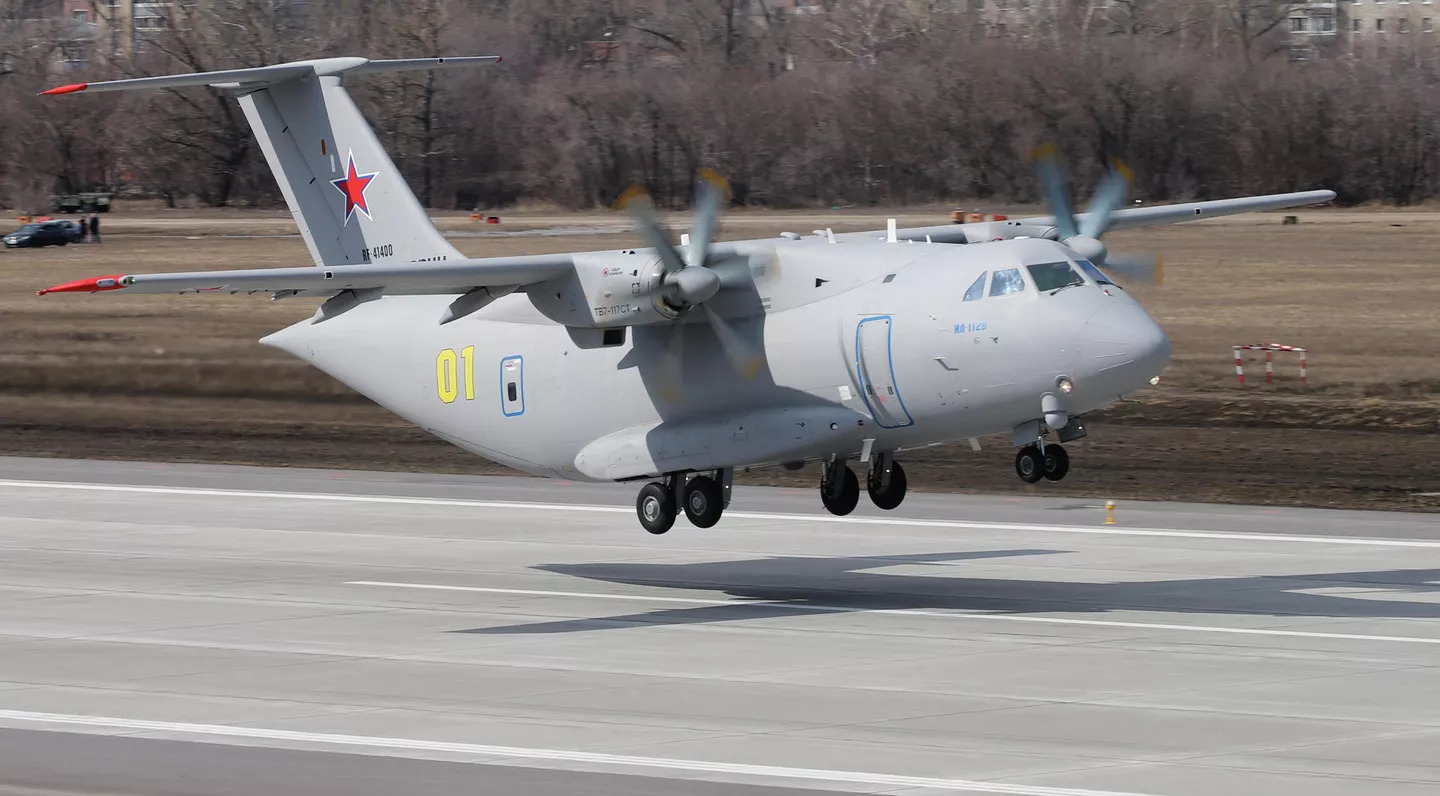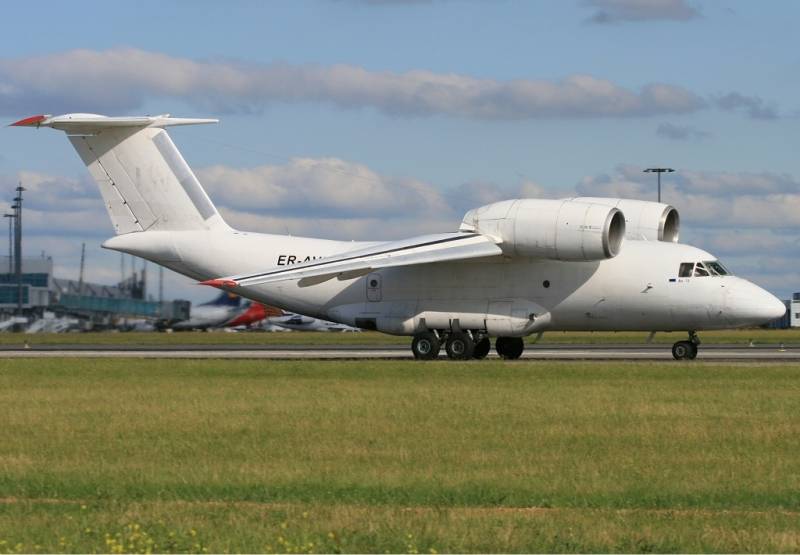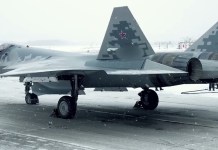Russia will soon begin work on a long-awaited medium military transport aircraft, the Ilyushin Il-212, to replace the Soviet-era and presently Ukrainian-origin Antonov An-26 and An-72. The aircraft is also effectively a revival of the Il-112V project that crashed on August 17, 2021.
The plane has a new designation because it would be powered by the PD-8 turbofan jet engines, which are also slated to power the Sukhoi Superjet SSJ-100 commercial airliner and the Beriev Be-200 amphibious plane.
The original Il-112V flew with a turboprop engine (the TV7-117ST), which led to its redesignation as the Il-212. The Public Joint Stock Company (PJSC) United Aircraft Corporation (UAC) has “begun developing a technical design for the aircraft.”
Russian experts have, however, pointed out problems with re-engining an airframe with a different type of engine and expressed skepticism over the production commencement deadline of 2026.
Shoigu Announces Redesignation Of Crashed Project With New Engine
Russia’s defense minister, Sergei Shoigu, announced the decision about the Il-212 during a “conference call” with the “leadership of the Armed Forces of the Russian Federation” on March 5.
He said, “The creation of a light military transport aircraft, Il-212, with a PD-8 turbojet engine, is underway. These aircraft will replace the aging An-26 and An-72 fleet.”
The new transport aircraft will feature “increased payload capacity, flight range, ease of refueling and maintenance… (the ability) to use unpaved, unequipped runways, and also operate in Arctic latitudes.”
Russian media reports said that planners decided to “resume work” on the Il-112V “military transport aircraft,” which was redesignated the Il-212. The difference was that the new plane would replace the TV7-117ST turboprop engines with the jet PD-8s.
This was because the cause behind the August 17, 2021 crash was a fire in the “starboard TV7 engine.” The accident killed three crew members, and the crash led to the second prototype of the aircraft being grounded.

Tactical Use & Advantages
The new Il-212 will only retain the predecessor’s airframe, flight instruments, and avionics. However, the fuselage, wings, fuel system, and hydraulic system will be significantly different owing to the jet engine, a July 2023 report from RIA Novosti said.
Interestingly, the engines would be placed above the main wings—like the Indian An-32s—to primarily prevent the entry of dust and ‘foreign objects’ into the intakes while operating from unprepared airstrips.
Additionally, the configuration also provides greater ‘lift’. It allows greater downward airflow from the wings and the side fuselage, aiding quick take-offs. Even the jet stream from the exhaust would be blowing downwards from the upper plane.
With Russia long anticipating a war with NATO and the US, rapid insertion and extraction of men and material from areas not very far from the frontlines could be a likely scenario.

While helicopters like the ultra-heavy lifter Mi-26 or the attack-cum-transport Mi-35s can undertake the role, their payload capacity, and speeds are less compared to those of a dual jet engine-powered tactical heavy airlift aircraft.
Fraught With Flaws
The scale of redesign and tweaks to convert the Il-112V to the Il-212 would be enormous, and the technical specifications of both engines provide a glimpse of the task at hand.
The PD-8 has a thrust and dry weight of 7.5 tons and 2.3 tons, respectively. The corresponding figures for the TV7-117 are 3.1 tons and 510 kg. Thus, a single PD-8 can produce twice the thrust of two TV7-117s.
For one, overwing engines will complicate maintenance and might even require the production of special tools and infrastructure. General aeronautical wisdom dictates designing a plane around an engine, not the other way around. Re-engining an existing plane with a jet powerplant in place of a propeller-driven turboprop goes against this accepted principle.
Moving the engines forward along the leading edge of the wings will entail a radical redesign and require several years of testing. This will also increase the risk of dust and particles from unpaved runways entering the engine since it would be relatively closer to the ground. Suspending it on pylons or carriers under the wing will make it completely unsuitable to operate from unprepared airfields.
The sheer weight of the PD-8 alone puts two to three times the load on the wing. Considering the increased speed generated by the powerful gas turbine jet engines, a complete redesign of the wing, too, cannot be ruled out.
The larger, ‘high-bypass’ PD-8s’ performance compared to the TV7-117s also translates into higher fuel consumption. This requires more internal space and, possibly, sacrificing the internal layout. That will mean slashing payload capacity. For a point of reference, the original Il-112V was designed to carry a weight of 5 tons and fly at 470 km an hour, with a range of 1,200 kilometers.
Interestingly, even the original Il-112V airframe and the TV7-117s were unsuitable. According to MashNews, the “weight of the aircraft before testing exceeded the technical specifications, but it was still sent into flight…This led to the disaster on August 17, 2021. (Meanwhile) the TV7-17S turbofans on board turned out to be insufficiently powerful,” the report added.
As for the PD-8s, they only “warmed up” on an SSJ-100 in October 2023, implying that it, too, needs to undergo sufficient testing. The SSJ-100s, too, would be high in demand over the next few years: 100 units will be produced from 2026 onwards, according to a plan announced by Prime Minister Mikhail Mishustin. Since the SSJ-100 uses two engines, 200 PD-8s would need to be produced annually.
Russia is also prioritizing its civil aviation sector to phase out older Soviet-era and Western-made Boeing and Airbus planes, raising the future demand for the SSJ-100 and, therefore, the PD-8. If it secures international orders for the SSJ-100 and simultaneously focuses on the Be-200, the demand for the PD-8s engines would be even higher.
This raises an important question: Can the United Engine Corporation (UEC) meet the need since mass-producing jet engines at such a scale is a different ball game altogether?
When one considers the issues regarding the A-50U Airborne Warning and Control Systems (AWACS) too, it reveals a clear pattern regarding the Russian aviation industry’s struggle with non-combat, transport, and civil aircraft.
- The author can be reached at satamp@gmail.com
- Follow EurAsian Times on Google News




